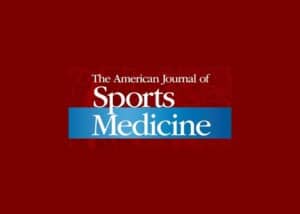
Background
Although posterior medial meniscal root (PMMR) repairs are often successful, postoperative meniscal extrusion after a root repair has been identified as a potential clinical problem.
Purpose/Hypothesis
The purpose was to quantitatively evaluate the tibiofemoral contact mechanics and extent of meniscal extrusion after a PMMR repair. It was hypothesized that the addition of a centralization suture (into the posterior medial tibial plateau) would help restore normal joint load-bearing characteristics and restore the native amount of meniscal extrusion after a root tear. Furthermore, we hypothesized that the amount of meniscal extrusion would be greatest in loaded and flexed knees when measured at the posterior border of the medial collateral ligament (MCL).
Study Design
Controlled laboratory study.
Methods
Meniscal extrusion and tibiofemoral contact mechanics were measured using 3-dimensional digitization and pressure sensors in 10 nonpaired, human cadaveric knees. The PMMR of each knee was tested under 6 states: (1) intact; (2) type 2A PMMR tear; (3) anatomic transtibial pull-out root repair; (4) anatomic transtibial pull-out repair with centralization; (5) nonanatomic transtibial pull-out repair; and (6) nonanatomic transtibial pull-out repair with centralization, with randomization of the order of conditions 3 and 4, and 5 and 6. The testing protocol loaded knees with a 1000-N axial compressive force at 4 flexion angles (0°, 30°, 60°, 90°) in each state. Meniscal extrusion was measured with a 3-dimensional coordinate digitizer at 0° and 90° in both the loaded and unloaded states and calculated from the difference from the articular margin of the tibia to the periphery of the meniscus. Peak contact pressure, contact area, and total contact pressure were also recorded for all states at all flexion angles. Statistical analysis investigated the independent effects of flexion, state, and loading using 3 distinct 2-factor models.
Results
Differences in the contact mechanics between repair techniques were most notable at higher flexion angles, demonstrating significantly higher average and peak contact pressures for nonanatomic repair states when compared with anatomic repairs with and without centralization (all P < .05). In unloaded knees at full extension, the magnitude of medial meniscal extrusion was significantly higher at the posterior border of the MCL compared with the posterior medial tibia (P < .001) and adjacent to the root attachment on the tibia locations (P < .001). Both anatomic repair states had no significant difference in the degree of extrusion when compared with the intact state.
Conclusion:
The anatomic transtibial pull-out root repair and the anatomic transtibial pull-out root repair with centralization techniques best restored contact mechanics of the knee and meniscal extrusion when compared with root tear and nonanatomic repair states at time zero. There were no significant differences in contact pressure or magnitude of extrusion between the anatomic repair state and the anatomic repair with centralization state. We found that extrusion is best measured in the coronal plane at the posterior border of the MCL for unloaded knees. However, the degree of extrusion increased as the knee was loaded and flexed to 90°.
